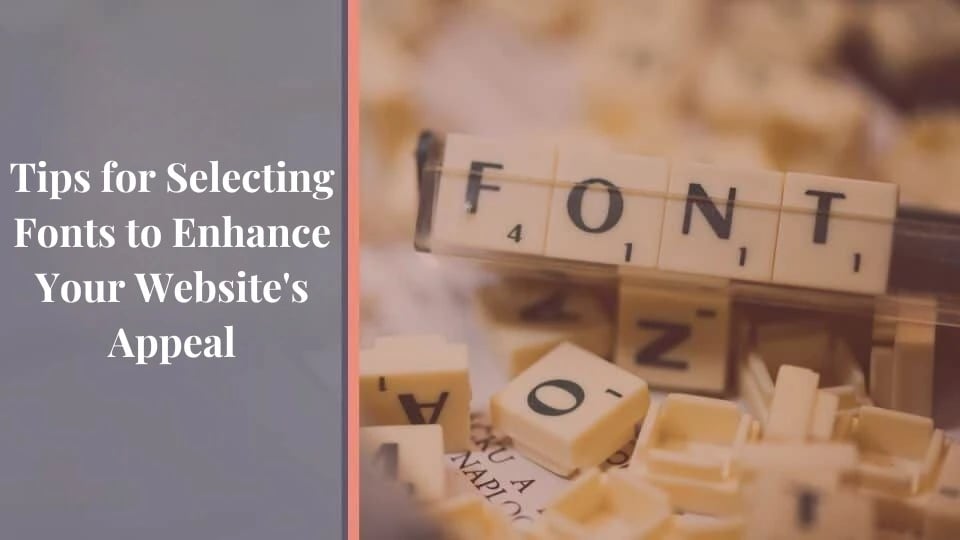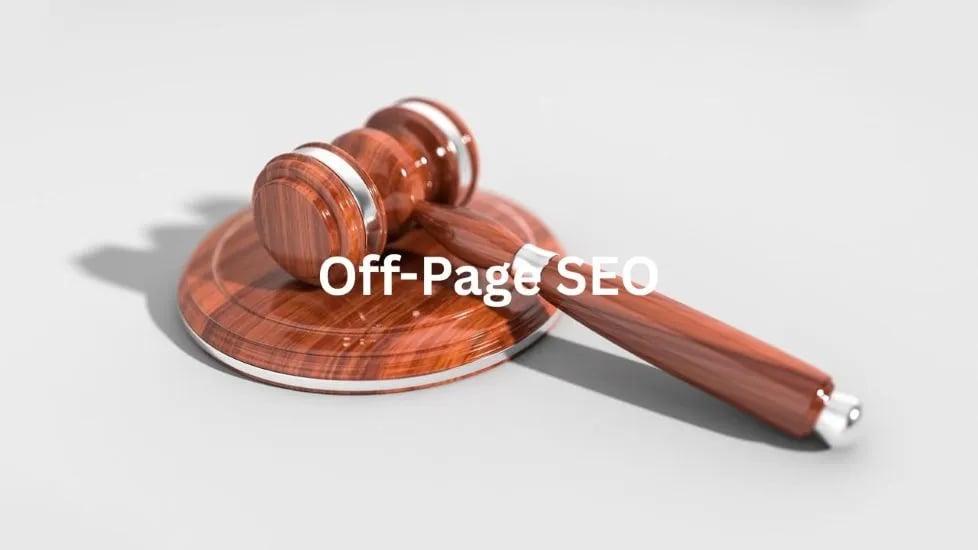
When building a website, every design choice you make has a significant impact on your customers’ first impression. With 94% of the first impression based on design and visuals, selecting the right font can make all the difference. As a business owner, you want to create a website that resonates with your target audience, increases leads, and ultimately drives conversions. At Mister Nguyen Agency, we understand the importance of font selection in enhancing your website’s appeal. In this article, we’ll provide you with practical tips on how to choose the perfect font for your website, ensuring a seamless user experience that sets your business apart from the competition on social media and beyond.
The Importance of Font Choice
A website’s design is a crucial aspect of its overall appeal, and font choice plays a significant role in it. When building a website, every visual choice you make has a big impact on your customers. You invest time and effort into creating a website that effectively communicates your brand’s message and values, and font choice is an integral part of that process.
Statistics on First Impressions
On average, it takes only 2.6 seconds for a user to fully form a conscious impression of your site. Moreover, 0.5 seconds is all it takes to be put off by a website’s design, and 94% of the first impression is based on design and visuals. These statistics highlight the importance of making a good first impression, and font choice is a critical element in achieving that.
As a business owner, you understand the significance of converting visitors into leads and customers. A well-designed website with a thoughtful font choice can make all the difference in achieving that goal. At Mister Nguyen Agency, we believe that a website’s design should be an extension of your brand’s identity, and font choice is a crucial aspect of that.
The Role of Fonts in Web Design
For any website, fonts make up a large proportion of the content, including calls to action, radial buttons, banners, and descriptive text. The fonts you choose can significantly impact the user experience on your website. A good font choice can enhance readability, accessibility, and overall aesthetics, while a poor choice can lead to a bad user experience and high bounce rates.
Fonts aren’t just visually appealing; they’re also functional. The right font choice can make a big difference in conveying your brand’s message and values. Whether you’re selling interior design objects or operating a contact center as a service business, your font choice should reflect your brand’s personality and tone.
It’s vital to consider the type of business you run and the message you want to convey when selecting fonts. By doing so, you can create a consistent visual identity that resonates with your target audience and sets you apart from your competitors.
Understanding Font Type and Typeface
Some of the most crucial decisions you’ll make when designing your website are related to typography. With so many font options available, it’s necessary to understand the basics of font type and typeface to make informed choices that enhance your website’s appeal.
With respect to selecting fonts for your website, you’ll encounter two terms: font type and typeface. While they’re often used interchangeably, they have distinct meanings. Understanding the difference between these two terms will help you make better design decisions and create a cohesive visual identity for your brand.
The Difference Between Font Type and Typeface
A necessary aspect of typography is understanding the distinction between font type and typeface. A typeface refers to a group of fonts that share a common design, while a font type is a specific style within that typeface.
Think of it like a family: the typeface is the parent, and the font types are the children. For instance, Sans Serif is a typeface characterized by a lack of accents (serifs) on the characters. Within the Sans Serif typeface, you’ll find various font types, such as Sans Serif Bold, Sans Serif Oblique, and so on.
Examples of Typefaces and Fonts
On the market, you’ll find numerous typefaces, each with its unique characteristics and font types. Some popular typefaces include:
Serif typefaces, like Times New Roman, are often used in print media and convey a sense of tradition and elegance. Sans Serif typefaces, like Arial, are commonly used in digital media and are known for their clean and minimalist style. Script typefaces, like Lobster, mimic handwriting and add a touch of personality to your website.
Understanding the characteristics of each typeface and font type will help you choose the perfect combination for your website. For example, if you’re operating a contact center as a service business, you may want to opt for a clean and professional Sans Serif typeface to convey a sense of efficiency and reliability.
At Mister Nguyen Agency, we understand the importance of typography in web design. By selecting the right font type and typeface, you can create a visually appealing website that resonates with your target audience and enhances your business’s online presence. Whether you’re selling interior design objects or promoting your brand on social media, your font choice can make a significant difference in how your customers perceive your business.
Choosing the Perfect Style for Your Website

While selecting the perfect font style for your website may seem like a daunting task, it’s crucial to remember that every visual choice you make has a significant impact on your customers’ first impression. According to the latest statistics, it takes only 2.6 seconds for a user to form a conscious impression of your site, and 94% of the first impression is based on design and visuals.
Factors to Consider When Choosing Fonts
Finding the ideal font style involves considering several factors that will help you make informed design decisions. These factors include knowing your options, consistency, readability, visibility, knowing your limits, prioritizing accessibility, considering your platforms, and paying attention to design specifics like kerning, alignment, and contrast.
- Understanding your business goals and target audience will help you determine the tone and style of your font.
- Considering your competitors’ font choices can also provide valuable inspiration.
- The type of business you run and the message you want to convey will influence your font choice.
The type of fonts you choose will convey certain characteristics to your customers, so it’s important to research traditional font styles and typefaces to understand what they convey.
Knowing Your Options and Researching
Researching different font styles and typefaces is crucial to making informed design decisions. You need to absorb as much information as possible about your font and typeface options, considering what parts of your site may require different levels of tone or clarity.
Plus, there are many software options and design apps available that can help you analyze your marketing images and provide feedback on aspects like form and readability. These resources can be especially helpful for beginners who are new to design.
Additionally, staying up-to-date with the latest design trends and best practices will help you make informed decisions about your font choices. By considering your options and researching thoroughly, you’ll be able to choose a font style that perfectly complements your website and resonates with your target audience.
Consistency in Font Choice

Now, when it comes to selecting fonts for your website, consistency is key. You want to create a cohesive visual identity that resonates with your brand and appeals to your customers. According to Jayesh Gandhi, “Consistency in font choice is crucial to create a harmonious visual identity” (Tips to choose best modern fonts for your website). In this chapter, we’ll explore the importance of consistency and how to achieve it by using primary, secondary, and tertiary fonts.
The Importance of Consistency
Any inconsistency in font choice can create visual noise, making it difficult for your customers to focus on the content. When you use multiple fonts without a clear hierarchy, it can lead to a cluttered and unprofessional design. Consistency in font choice helps to create a clear visual flow, making it easier for your customers to navigate your website and engage with your content.
Moreover, consistency in font choice helps to reinforce your brand identity. When you use a consistent font throughout your website, it creates a sense of familiarity and cohesion, making your brand more recognizable and memorable.
Primary, Secondary, and Tertiary Fonts
Consistency in font choice can be achieved by using a primary, secondary, and tertiary font. Your primary font should be directly associated with your brand identity and feature in your logos, headers, and promotional materials. This font should be expressive, visually appealing, and reflective of your brand’s personality.
Your secondary font is used for the main copy on your website, including descriptive and informative text. This font should be clear, readable, and accessible, while still being related to your primary font. Your tertiary font is used for additional website elements, such as call-to-action prompts, radial buttons, and other eye-catching elements. This font can have more flair than your secondary font but should still be readable and avoid clashing with your primary font.
Plus, using a primary, secondary, and tertiary font helps to create a clear hierarchy of information on your website. By using different fonts for different types of content, you can guide your customers’ attention and create a more engaging user experience.
Readability and Visibility
Once again, the importance of readability and visibility cannot be overstated. With readability being a crucial aspect of website design, it’s important to choose fonts that are clear, legible, and easy to read. This includes considering the size, color, and style of the font, as well as the background and surrounding elements. You want to make sure that your text stands out and is easily readable, even for users with visual impairments.
Ensuring Readability
When opting for fonts, consider the following factors to ensure readability: font size, line spacing, and letter spacing. A minimum font size of 16 pixels is recommended, with a line spacing of at least 1.5 times the font size. Additionally, consider the letter spacing, also known as tracking, to ensure that the text is not too cramped or too spaced out.
It’s also important to consider the color scheme and contrast of your website. Ensure that the text color has sufficient contrast with the background color, making it easy to read. You can use online tools to test the contrast and adjust accordingly.
Considering Dark Mode and User Preferences
User preferences play a significant role in readability and visibility. Some users prefer light backgrounds with dark text, while others prefer the opposite. Including a “dark mode” option, as seen in popular apps like Twitter and Twitch, is a good practice. This allows users to switch between light and dark modes, depending on their preference.
Visibility is also crucial in ensuring that your website is accessible to all users. This includes considering users with color blindness or color vision deficiency, as well as those with other visual impairments. By designing with accessibility in mind, you can ensure that your website is inclusive and user-friendly.
By considering readability and visibility, you can create a website that is both visually appealing and functional. Be mindful of, your website is often the first point of contact with your customers, and a well-designed website can make all the difference in converting leads and retaining customers. At Mister Nguyen Agency, we understand the importance of design in driving business results, and we’re here to help you create a website that truly represents your brand.
Technical Considerations
Unlike other design elements, font choices can have a significant impact on your website’s performance and accessibility. When selecting fonts, it’s important to consider the technical aspects to ensure that your website loads quickly, is accessible to all users, and provides an optimal user experience.
For instance, a discussion on best approach to choosing fonts for a website? – Design & UX highlights the importance of considering the technical implications of font choices. By understanding these technical considerations, you can make informed decisions that enhance your website’s appeal and performance.
Knowing Your Limits: Font Choice and Site Performance
Choice of font can significantly impact your website’s loading speed. A slow-loading website can lead to high bounce rates, negatively affecting your business. According to statistics, sites that load in under 2.4 seconds see up to 10% lower bounce rates than those that take 3.3 seconds. Faster sites also increase conversion rates for e-commerce businesses.
To ensure that your font choice doesn’t compromise your website’s performance, it’s crucial to select web-friendly fonts that translate easily for your website’s backend. This will help you maintain a fast-loading speed, providing an optimal user experience for your customers.
Prioritizing Accessibility
Your website’s font choice should prioritize accessibility to cater to users with specific needs. Considering accessibility is important to ensure that all users have a positive experience on your website.
For instance, there are 300 million people worldwide with color blindness or color vision deficiency. Yet, many websites don’t consider whether their designs will be readable for this common condition. By prioritizing accessibility, you can ensure that your website is inclusive and provides an optimal experience for all users.
Plus, considering accessibility can also improve satisfaction for all your customers, not just those with specific limitations. By listening to feedback and improving over time, you can create a website that caters to diverse user needs, ultimately enhancing your business’s reputation and customer loyalty.
By considering these technical aspects, you can make informed font choices that enhance your website’s appeal, performance, and accessibility, ultimately driving more leads and customers to your business. As a design expert, I recommend prioritizing these technical considerations to create a website that truly represents your brand and resonates with your target audience.
Considering Your Platforms
To ensure that your website appeals to a wide range of customers, you need to consider how your font choices will translate across different platforms. With more than 50% of users viewing your site on mobile devices, and the remaining half on desktop or tablet browsers, it’s crucial to optimize your fonts for readability and clarity across all formats.
Optimizing Fonts for Mobile and Desktop
Optimizing your fonts for mobile and desktop devices requires careful consideration of the unique challenges and limitations of each platform. On mobile devices, screen real estate is limited, and fonts need to be clear and readable even at smaller sizes. You may need to sacrifice some style for clarity when scaling down logo images and other design elements. On the other hand, desktop devices offer more screen space, allowing for more elaborate font designs and larger font sizes.
When designing for mobile, consider using simpler font styles and larger font sizes to ensure readability. You can also use automation testing strategies to ensure that your font choices translate seamlessly across different devices and formats. By doing so, you can create a consistent user experience that resonates with your customers, regardless of how they access your website.
At Mister Nguyen Agency, we understand the importance of creating a design brand that resonates with your customers. By considering your platforms and optimizing your fonts for mobile and desktop devices, you can create a website that effectively communicates your message, and drives leads. Don’t underestimate the power of font choice in enhancing your website’s appeal – it’s a crucial aspect of UX design that can make all the difference in converting visitors into customers.
Designing with Fonts
Not every font is created equal, and when it comes to designing with fonts, there are several key considerations to keep in mind. As a website owner, you want to ensure that your font choices enhance the overall user experience and effectively communicate your brand’s message.
Kerning, Leading, and Tracking
On the surface, these terms may seem like technical jargon, but they play a crucial role in creating a visually appealing and readable font. Kerning refers to the space between individual letters, leading refers to the space between lines of text, and tracking refers to the space between words. By adjusting these elements, you can create a more harmonious and balanced font that is easy on the eyes.
For example, if you’re using a font with tight kerning, you may need to adjust the leading to ensure that the lines of text don’t appear too cramped. Similarly, if you’re using a font with loose tracking, you may need to adjust the kerning to prevent the words from appearing too far apart. By finding the right balance between these elements, you can create a font that is both aesthetically pleasing and easy to read.
Alignment and Contrast
To create a visually appealing font, you need to consider the alignment and contrast of your text. Alignment refers to how the text is positioned on the page, while contrast refers to the way the text stands out against the background. By adjusting these elements, you can create a font that is easy to read and draws the eye to the most important information.
For instance, if you’re using a dark background, you may want to use a light-colored font to create contrast. Similarly, if you’re using a bold font, you may want to use a smaller font size to create a sense of balance. By experimenting with different alignment and contrast options, you can create a font that is both visually appealing and effective at communicating your message.
Leading to this, it’s imperative to consider how you want your customers to interact with your website. What do you want them to focus on? What message do you want to convey? By answering these questions, you can determine the best alignment and contrast options for your font and create a design that effectively communicates your brand’s. For more insights on improving your website’s design and brand, visit Mister Nguyen Agency at www.misternguyen.com.
Summing up
The importance of selecting the right fonts for your website cannot be overstated. The statistics are clear: a good font choice can make a significant difference in your website’s appeal, conversion rates, and customer retention. As a business owner, you want to ensure that your website makes a great first impression, and your font choice plays a crucial role in achieving this. By considering the seven factors outlined in this article, you can make informed decisions about your font choices and create a website that resonates with your target audience.
Note, your website is a representation of your business, and every design element, including your font choice, contributes to the overall user experience. By taking the time to research, test, and refine your font choices, you can create a website that effectively communicates your brand’s message, values, and personality. At Mister Nguyen Agency, we understand the importance of effective design in driving business success, and we’re here to help you create a website that truly represents your brand. Whether you’re looking to improve your website’s appeal, increase conversions, or enhance your social media presence, our team of experts is dedicated to helping you achieve your goals.











